#solarpunk architecture
Explore tagged Tumblr posts
Text

By marcio lima
#nestedneons#cyberpunk#cyberpunk art#art#cyberpunk aesthetic#cyberpunk artist#cyberwave#megacity#futuristic city#scifi#scifi art#scifi aesthetic#retro scifi#retrowave#vintage#solarpunk#utopia#solarpunk architecture#solarpunk art#ai art#vaporwave#vaporpunk
973 notes
·
View notes
Text


Research shows that these techniques can help prevent the need for air conditioning, the long-range transport of building materials and concrete production, all of which contribute to the greenhouse gas (GHG) emissions driving the climate crisis.
#solarpunk#solar punk#africa#indigenous knowledge#solarpunk architecture#sustainable#architecture#design
352 notes
·
View notes
Text
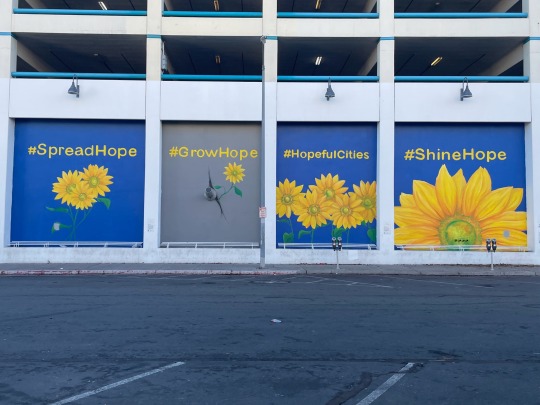
Outside the Reno Amtrak Station.
#solarpunk#hopepunk#art#murals#street art#spreadhope#growhope#hopefulcities#shinehope#sunflowers#community#plants#solarch#solarpunk architecture#Amtrak#train station#hopecore#hope
122 notes
·
View notes
Photo
I want to live here it’s so beautiful

I am completely fascinated by this abandoned home some urban explorers came across in Belgium. It’s covered in moss, which only adds to its charm, but look at the Plexiglas sunroom.
Keep reading
#fav#architecture#Solarpunk#I bet it gets incredibly hot in that sun room but it’s definitely beautiful#house#houses#abandoned#abandoned house#art#moss#reclaimed by nature#plexiglass#solarpunk architecture#green
43K notes
·
View notes
Text


Pictured: Luis Cassiano is the founder of Teto Verde Favela, a nonprofit that teaches favela residents in Rio de Janeiro, Brazil, how to build their own green roofs as a way to beat the heat. He's photographed at his house, which has a green roof.
Article
"Cassiano is the founder of Teto Verde Favela, a nonprofit that teaches favela residents how to build their own green roofs as a way to beat the heat without overloading electrical grids or spending money on fans and air conditioners. He came across the concept over a decade ago while researching how to make his own home bearable during a particularly scorching summer in Rio.
A method that's been around for thousands of years and that was perfected in Germany in the 1960s and 1970s, green roofs weren't uncommon in more affluent neighborhoods when Cassiano first heard about them. But in Rio's more than 1,000 low-income favelas, their high cost and heavy weight meant they weren't even considered a possibility.
That is, until Cassiano decided to team up with a civil engineer who was looking at green roofs as part of his doctoral thesis to figure out a way to make them both safe and affordable for favela residents. Over the next 10 years, his nonprofit was born and green roofs started popping up around the Parque Arará community, on everything from homes and day care centers, to bus stops and food trucks.
When Gomes da Silva heard the story of Teto Verde Favela, he decided then and there that he wanted his home to be the group's next project, not just to cool his own home, but to spread the word to his neighbors about how green roofs could benefit their community and others like it.

Pictured: Jessica Tapre repairs a green roof in a bus stop in Benfica, Rio de Janeiro, Brazil.
Relief for a heat island
Like many low-income urban communities, Parque Arará is considered a heat island, an area without greenery that is more likely to suffer from extreme heat. A 2015 study from the Federal Rural University of Rio de Janeiro showed a 36-degree difference in land surface temperatures between the city's warmest neighborhoods and nearby vegetated areas. It also found that land surface temperatures in Rio's heat islands had increased by 3 degrees over the previous decade.
That kind of extreme heat can weigh heavily on human health, causing increased rates of dehydration and heat stroke; exacerbating chronic health conditions, like respiratory disorders; impacting brain function; and, ultimately, leading to death.
But with green roofs, less heat is absorbed than with other low-cost roofing materials common in favelas, such as asbestos tiles and corrugated steel sheets, which conduct extreme heat. The sustainable infrastructure also allows for evapotranspiration, a process in which plant roots absorb water and release it as vapor through their leaves, cooling the air in a similar way as sweating does for humans.
The plant-covered roofs can also dampen noise pollution, improve building energy efficiency, prevent flooding by reducing storm water runoff and ease anxiety.
"Just being able to see the greenery is good for mental health," says Marcelo Kozmhinsky, an agronomic engineer in Recife who specializes in sustainable landscaping. "Green roofs have so many positive effects on overall well-being and can be built to so many different specifications. There really are endless possibilities.""
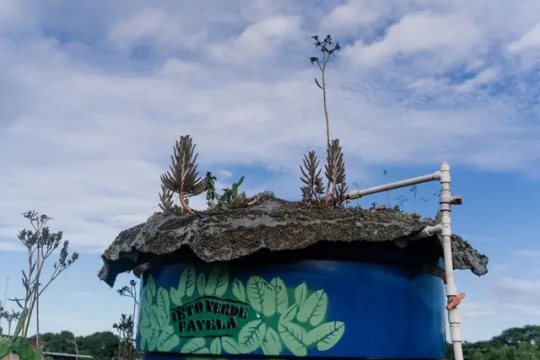
Pictured: Summer heat has been known to melt water tanks during the summer in Rio, which runs from December to March. Pictured is the water tank at Luis Cassiano's house. He covered the tank with bidim, a lightweight material conducive for plantings that will keep things cool.
A lightweight solution
But the several layers required for traditional green roofs — each with its own purpose, like insulation or drainage — can make them quite heavy.
For favelas like Parque Arará, that can be a problem.
"When the elite build, they plan," says Cassiano. "They already consider putting green roofs on new buildings, and old buildings are built to code. But not in the favela. Everything here is low-cost and goes up any way it can."
Without the oversight of engineers or architects, and made with everything from wood scraps and daub, to bricks and cinder blocks, construction in favelas can't necessarily bear the weight of all the layers of a conventional green roof.
That's where the bidim comes in. Lightweight and conducive to plant growth — the roofs are hydroponic, so no soil is needed — it was the perfect material to make green roofs possible in Parque Arará. (Cassiano reiterates that safety comes first with any green roof he helps build. An engineer or architect is always consulted before Teto Verde Favela starts a project.)
And it was cheap. Because of the bidim and the vinyl sheets used as waterproof screening (as opposed to the traditional asphalt blanket), Cassiano's green roofs cost just 5 Brazilian reais, or $1, per square foot. A conventional green roof can cost as much as 53 Brazilian reais, or $11, for the same amount of space.
"It's about making something that has such important health and social benefits possible for everyone," says Ananda Stroke, an environmental engineering student at the Federal University of Rio de Janeiro who volunteers with Teto Verde Favela. "Everyone deserves to have access to green roofs, especially people who live in heat islands. They're the ones who need them the most." ...
It hasn't been long since Cassiano and the volunteers helped put the green roof on his house, but he can already feel the difference. It's similar, says Gomes da Silva, to the green roof-covered moto-taxi stand where he sometimes waits for a ride.
"It used to be unbearable when it was really hot out," he says. "But now it's cool enough that I can relax. Now I can breathe again."
-via NPR, January 25, 2025
#architecture#sustainable architecture#heat islands#urban heat#brazil#brasil#south america#favela#rio de janeiro#green roof#plants#climate action#climate adaptation#infrastructure#good news#hope#solarpunk
8K notes
·
View notes
Text
57K notes
·
View notes
Text



1, 2, 3
788 notes
·
View notes
Text

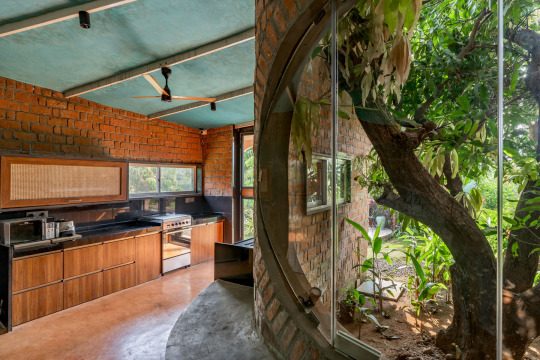
Asmalay is a biophilic farmhouse near Mumbai that embraces the interplay of architecture and nature. The residence integrates natural and recycled materials and passive design methodologies to position itself as a celebration of sustainable living.
419 notes
·
View notes
Text



Metabolist capsule house designed by Kisho Kurokawa.
410 notes
·
View notes
Text
So even though this is more spring/summer like, I’ve been thinking Bout apartments. There’s a video saying that four stories is the maximum where people can still feel a part of the street as you can still hear the goings on and stuff. And if you have a courtyard inside there’s a space of “oh let’s be a bit more quiet”. So I was thinking that there could be wildflowers, some bushes and trees outside the apartment that people could walk by and grab whatever fruit that’s growing and ripe. While inside the courtyard is a bit more maintained for the folks who have pets and kids who wanna run around. And on the roof there’s solar panels angled for snow and rain to fall off. Perhaps underneath that solar panels the roof has a community garden for the people in the apartments. Probably use rainwater and snowmelt for the apartments, and then use grey water for the plants in the courtyard. Maybe have a bio system for black water treatment? Each apartment has a balcony, and they can have sun shades for the windows that’s in the direct line of the sun in the summer to help with the passive cooling and heating. And underneath there’s a good sturdy basement for things such as tornadoes or just plain ol’ get togethers. Maybe that can be where the community kitchen could be too. I’m also thinking that each doorway is tall enough for someone who’s like 6’5” could comfortably walk through while the doorways, hallways, and walkways are large enough for someone who’s using the world’s biggest wheelchair could confidently do a u-turn in. Some apartments are formatted for wheelchair users while every unit has accessibility features like a seat in the shower you can put up or down or a bathtub you can easily get in and out. And yes the elevator will have braille as well as the signs for each apartment. Maybe the building materials will be hempcrete. Ideally reusable materials from old buildings and the like to give them new life. I’d also like to ensure the building is good against floods, tornadoes, fire, earthquakes, and the like. Pretty sure that’s what everyone wants to do lol.
Just some ideas I’ve been thinking about. Been dreaming on making an Solarpunk apartment building. Made a sketch to kinda get a feel for what I want.

#Solarpunk#solarpunk aesthetic week#sustainability#sustainable apartment#sustainable building#sustainable architecture#I like have a full on plan for if I could somehow make a sustainable apartment if it’s finished#I just want more sustainable apartments ya know?
172 notes
·
View notes
Text
!! Good for him!!
From the above article:
"Several architects and designers have made it onto the inaugural Time100 Climate list, which recognises "true changemakers" who are making "measurable, scalable" progress in fighting climate change...
Among the three highlighted architects are William McDonough, also known as the "father of the circular economy", and Diébédo Francis Kéré, who was commended for his "innovative works that are deeply rooted in sustainability principles."
"Having worked on projects in resource-scarce regions like Burkina Faso, I've witnessed firsthand the necessity for immediate change," Kéré told Time.
"What I believe is fundamental for all of us, regardless of our roles, is to cultivate a profound awareness that change is imperative, and it is required urgently," he added. "The climate challenge is not a distant future scenario; it's a present reality." ...
Time's editors worked with in-house experts from the magazine's climate action platform Time CO2 to compile a list of the 100 most influential climate leaders in business for 2023, based on nominations provided by a panel of sustainability leaders.
Among the judges were Christiana Figueres, former executive secretary of the UN Framework Convention on Climate Change and architect of the landmark Paris climate agreement, and Johan Rockstrom, director of the Potsdam Institute for Climate Impact Research...
"In the end, the inaugural Time100 Climate list produced no single perfect instance of complete climate action, but multitudes of individuals making significant progress in fighting climate change by creating business value," he wrote.
The project is a spinoff of Time's annual Time100 list of the 100 most influential people in the world."
-via Dezeen, December 4, 2023
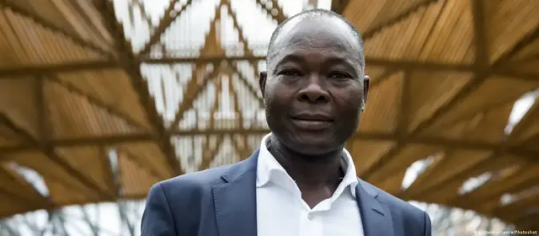
Francis Kere: Pioneer of social, ecological design
Francis Kere is one of the world's elite architects and a leading voice in sustainable design. His career began with a school built in his village in Burkina Faso. Many award-winning ecological and social designs followed. Kere has now been awarded the Praemium Imperiale for his life's work.

In 2022, he became the first Black architect, and the first one from the African continent, to receive the prestigious Pritzker Prize — an award seen as the "Nobel Prize" of architecture.
He specializes in construction styles that combine traditional materials and modern technology.
Francis Kere, who was born in the small village of Gando in 1965, moved to Berlin as a young man thanks to a scholarship. He first completed vocational training as a carpenter in the German capital before starting to study architecture at Berlin's Technical University in 1995.
While still a student, he completed his first major project, building a primary school out of clay in Gando — light and airy, just like the one he wished for as a child.
For his respectful use of resources and his environmental approach, he received the Aga Khan Award for Architecture in 2004, the first of many honors.
He almost didn't return to university, but his professors convinced him to complete his studies. In 2005, he founded his own office in Berlin, Kere Architecture. He now has both German and Burkinabe citizenship.
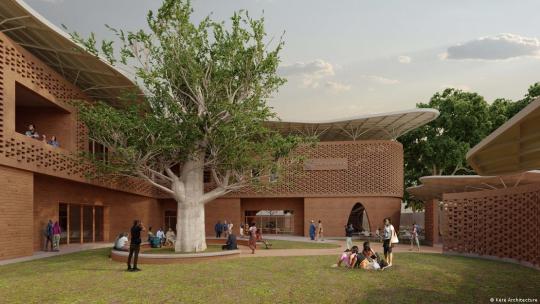
Kere uses clay as a building material
With the construction of the elementary school in Gando, Kere demonstrated how the oldest but also most ecological building material in the world can be used in a more modern and resistant way.
Kere's bricks are made of clay, which has been used in the Sahel region for centuries due to its temperature-regulating properties,. He also makes use of laterite, a soil type that has a rusty-red coloration due to its high iron oxide content. A little bit of cement is added to the slightly moistened earth that is pressed into bricks, which makes them strong and waterproof.
The building's design is so clever that it does not need air conditioning to remain cool, working with natural air circulation instead. Kere also designs his buildings in harmony with the path of the sun, integrating natural shade into his concepts.

Community as a resource
Whether in Dakar or in Benin, where he is currently building the new parliament building, Kere's approach follows traditional rules and is based on a holistic concept, largely involving local workers.
"Building is a big task and it requires many, many people to work together; people who also have a lot of experience and pass on their knowledge to the next generation," said the architect. "That means it's a community event, and I've integrated that idea into my projects."
Remaining true to his first design, the village school in Gando, Kere is committed to architectural designs filled with air and light which harness the local community's energy and convey identity and pride. "Of course I want to create quality and comfort. But above all, I want the result to inspire people," he said.
'Nobel Prize' of the arts
The Praemium Imperiale is one of the most important arts prizes in the world.
The prestigious global arts award is given every year in five different fields — along with Kere's prize in architecture, this year's winners are Vija Celmins in painting, Olafur Eliasson in sculpture, Wynton Marsalis in music and Robert Wilson in theater/film.
Each prize is endowed with 15 million yen (€95,000/$102,000).
The Praemium Imperiale has been awarded annually since 1989 by the Japan Art Association. The Japanese imperial family created it to commemorate Prince Takamatsu, who died in 1987.
#solarpunk#solar punk#community#ecological design#ecological#architecture#francis kere#solarpunk architecture#sustainability#burkina faso#africa#climate change#climate optimism#climate hope
288 notes
·
View notes
Text
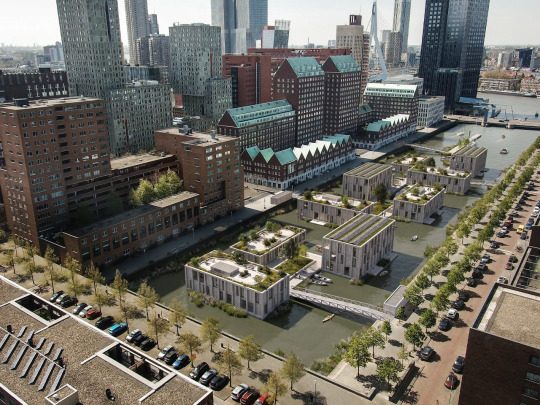
Rotterdam's Solarpunk Aesthetic manifests in floating new neighbourhood
The Spoorweghaven community, designed by Danish maritime architects MAST, presents a vivid vision for the future. With over a hundred low-cost apartments, commercial spaces, and a recreational harbor, this floating development is more than an engineering feat—it is a celebration of Scandinavian ingenuity and urban adaptability.

In a country where water and land have always danced a delicate waltz, this project proposes a new choreography—one where homes, public spaces, and even gardens gently float above the ground. The design respects the Dutch tradition of living with water, yet speaks with a distinctly Nordic sensibility, favoring clean lines, communal zones, and a seamless connection to nature.
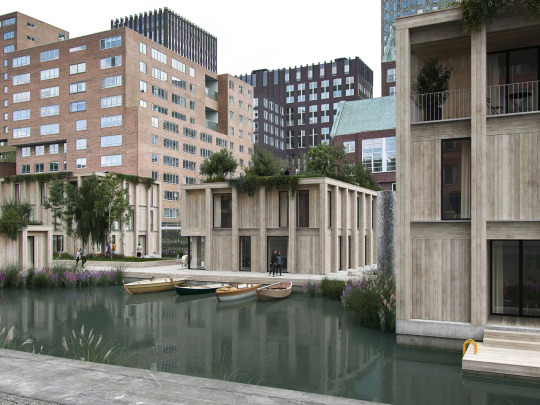
MAST collaborated with the Scottish company Biomatrix to create over 900 square meters of floating reed beds that encircle the perimeter of the site. These reeds do more than beautify the edge—they cleanse the harbor water, attract birds and fish, and bring a soft, living border to the modular forms. The buildings themselves are constructed off-site and then towed into position, a method that minimizes disturbance and celebrates the logic of Scandinavian prefab traditions.
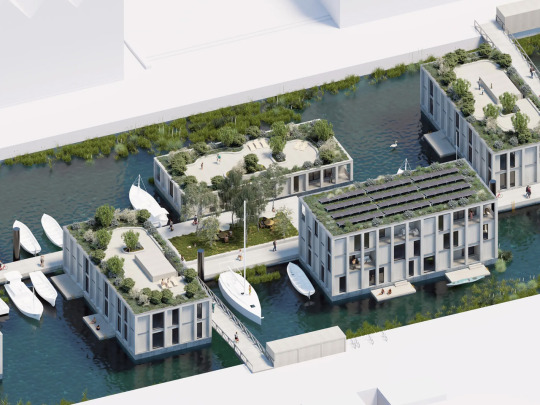
The sense of community is gently woven into every aspect of the development. Shared green spaces and walkways become informal meeting points, while the continuous blue ribbon of navigable water invites both residents and visitors to experience the city from an entirely new vantage. The architecture does not impose, but rather settles in lightly and thoughtfully, making space for both human and non-human life.
181 notes
·
View notes
Text

Oh to be a gardener robot with a pet cat living in a solarpunk world and taking care of little plants... ☀️🌿
[My piece for the #WeekAndArt2024 event, a French online art contest]
#solarpunk#wat2024#weekandart2024#utopy#gardener robot#greenhouse#sci-fi#sff#future#futuristic architecture#plants#solarpunk aesthetic#scifi aesthetic#sci-fi aesthetic#robot#cat
289 notes
·
View notes
Text
"Almost all new homes in England will be fitted with solar panels during construction within two years, the government will announce after Keir Starmer rejected Tony Blair’s criticism of net zero policies.
Housebuilders will be legally required to install solar panels on the roofs of new properties by 2027 under the plans.
The policy is estimated to add between £3,000 and £4,000 to building a home but homeowners would save more than £1,000 on their annual energy bills, according to the Times.
Labour has set a target of building 1.5m homes by the end of the parliament [May 2029]. The party has promised to decarbonise the electricity grid by 2030 and cut household energy bills by £300 a year.
Ministers are also preparing to offer government-funded loans and grants for the installation of solar panels on existing homes.
The move is a sign that the government will press ahead with its net zero agenda after Starmer rejected criticisms of climate policy from Blair.
In a high-profile intervention days before the local elections, Blair said there needed to be a radical reset of “irrational” net zero policies that were “doomed to fail”.
The former Labour prime minister argued that the public was being asked to make “financial sacrifices and changes in lifestyle” that would have “minimal” effect on global emissions. He said the drive to phase out fossil fuels in the short term was “doomed to fail” because their production and demand were rising.
His remarks angered government figures and triggered a response from senior No 10 officials, who called the Tony Blair Institute for Global Change (TBI) and urged it to address the fallout. The TBI issued a clarifying statement on Wednesday morning saying it believed the government’s net zero policy was “the right one”.
Blair’s remarks were interpreted as an attack on Starmer’s policy agenda after the prime minister said last week that tackling the climate crisis and bolstering energy security were “in the DNA of my government”...
Campaigners have welcomed the news that the government is going to mandate solar panels on new homes.
Lily-Rose Ellis, Greenpeace UK’s climate campaigner, said: “For too long we’ve wasted the free energy that falls on the roofs of houses every single day. Now, people living in new-build homes will save hundreds of pounds every year on their energy bills, thanks to this commonsense decision from the government.”
A government spokesperson said: “We have always been clear that we want solar panels on as many new homes as possible because they are a vital technology to help cut bills for families, boost our national energy security and help deliver net zero.
“Through the Future Homes Standard we plan to maximise the installation of solar panels on new homes as part of our ambition to ensure all new homes are energy efficient, and will set out final plans in due course.”"
-via The Guardian, May 1, 2025
#uk#united kingdom#europe#england#solar#uk pol#uk politics#solar panels#solar power#housing#keir starmer#climate action#climate hope#architecture#sustainable architecture#renewables#solarpunk#good news#hope
470 notes
·
View notes
Text
Okay now I want oyster walls
3K notes
·
View notes
Text
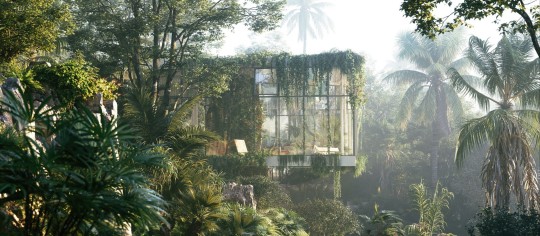
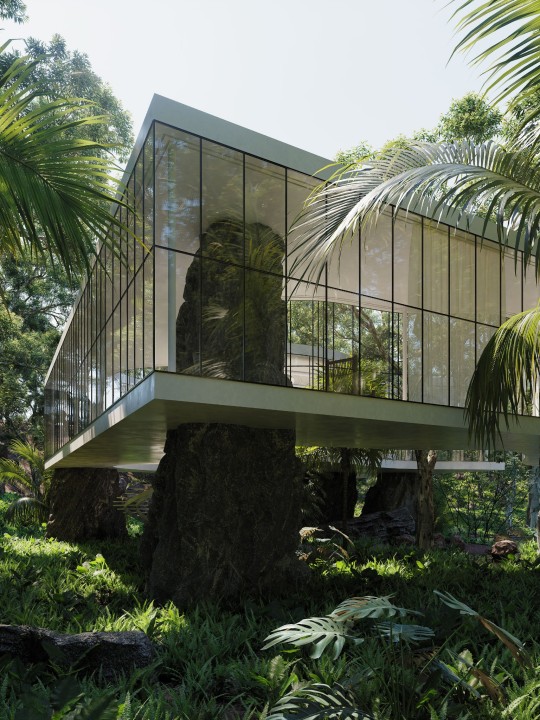
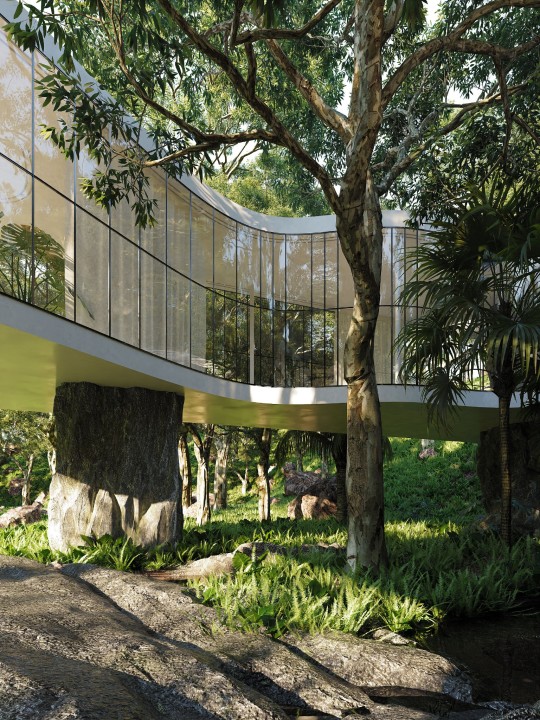

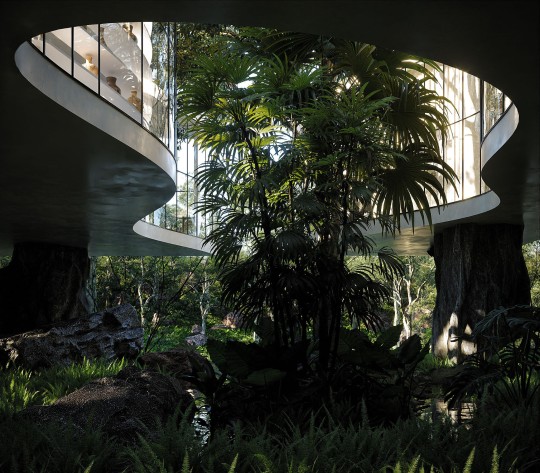
Nicholas Préaud Architecture
#3d art#architecture#jungle#tropical#junglewave#glass#overgrown#plants#interior#bedroom design#solarpunk#aes#interior design
596 notes
·
View notes